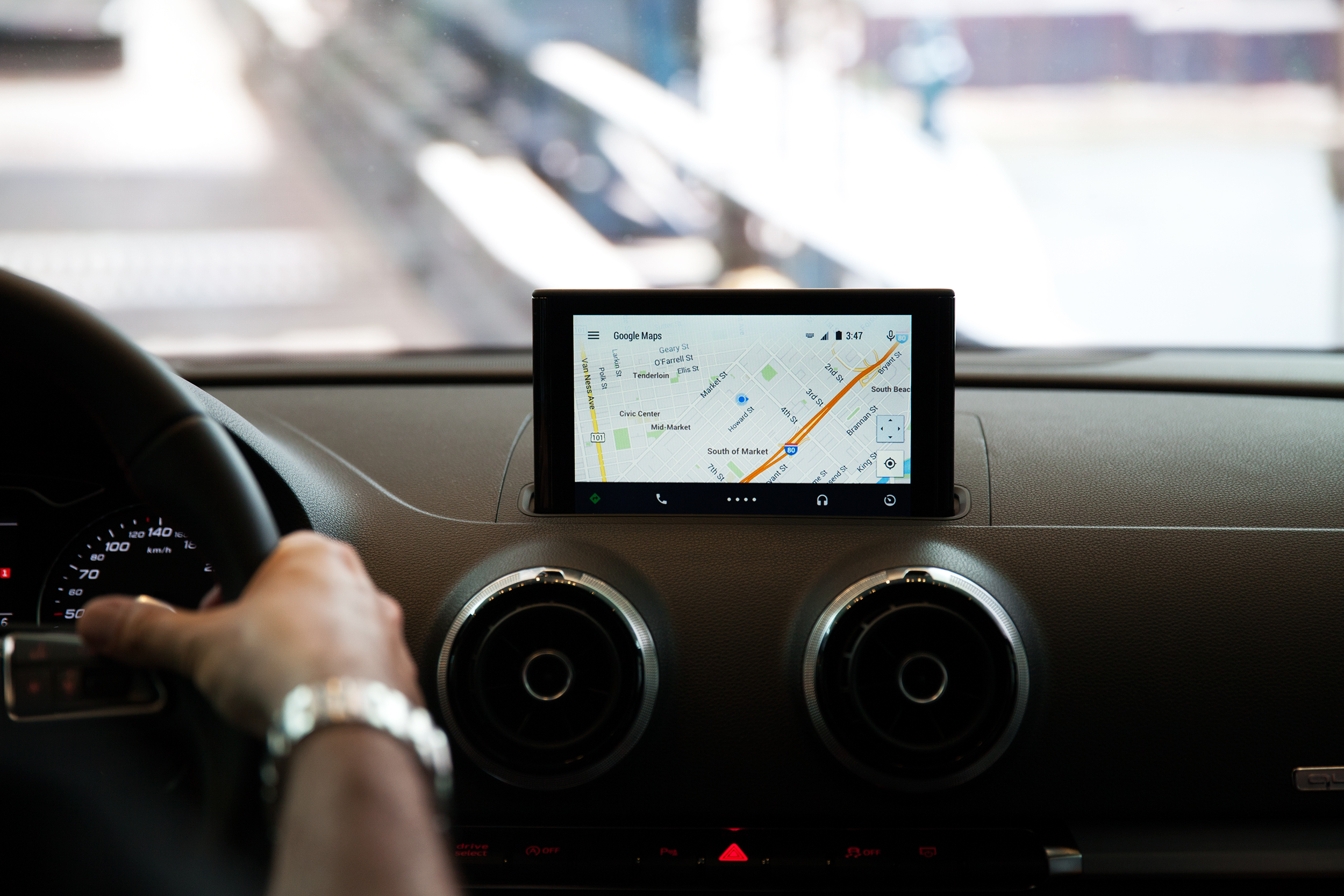
- 2 Min Read / Blog / 3.2.2020

In order to provide development platforms that give brands a voice in the automotive space, both Apple and Google have explored extensions of their flagship mobile operating systems that are specifically designed to run in cars. CarPlay, iOS’s counterpart in dozens of car brands’ vehicles, and Android Auto, the Google equivalent for the world’s most common mobile OS, both extend smartphones’ utility into traditional car infotainment systems.
But thinking about CarPlay and Android Auto as mere extensions of a mobile experience limits the imagination to what apps might do with a second screen, Punchkick strategist Billy Collins argues. “Today’s connected car platforms aren’t an extension of the phone or the tablet. They’re completely different screens with their own unique use cases.” Approaching in-car experiences with this perspective can yield more useful and engaging apps for drivers.
“The ‘connected car’ doesn’t necessarily mean people are looking at screens while they’re driving. Connected cars will allow people to engage with maps, music, phone calls, and more without distracting from the core task of driving.” —Billy Collins, Strategist
Today, both Apple and Google provide strict guidance around what types of apps can appear on these connected car platforms. Likely in the interest of driver safety and respecting the attention driving demands, CarPlay and Android Auto provide few avenues for custom development. “Apple is guarded about who can develop for CarPlay today,” said Collins, alluding to Apple’s close partnership with a handful of audio streaming apps. “But you can imagine a future where these platforms grow into a sandbox where developers can reach drivers in safe and reliable ways.”
Android Auto offers similar limitations, allowing developers to show new notifications and providing a scarce number of interface layout options so as not to distract drivers from the road. But both CarPlay and Android Auto become more compelling when you consider the development burden it lifts from automotive manufacturers, who are slow to upgrade infotainment systems or lack software development capabilities in-house.
“Android Auto and CarPlay are exciting because they remove the development burden from the automakers, and create a middle ground where developers can play.” —Billy Collins, Strategist
What’s more, the fast upgrade cycles of mobile operating systems will allow Apple and Google to push new features to users’ devices, rather than relying on firmware updates to vehicles’ infotainment systems in the field. The benefits of brought-in connected car systems (as opposed to “built-in” systems) are clear: easy upgradeability allows drivers to add new features to their cars over a number of years, rather than relying on infrequent and unreliable updates from an OEM.

Apple launched new CarPlay features in iOS 8.3 this week that allow iPhones to wirelessly connect via Bluetooth Low-Energy. The change removes barriers to in-car infotainment systems that might not include the once-necessary iOS Lightning cable, and might allow for a wider range of cars to join the CarPlay ecosystem via Bluetooth. “The days of simply getting in the car and having your iPhone wirelessly populate the in-car system with your favorite CarPlay apps, media, and notifications might soon be upon us,” said Collins.
These connected car systems go further to integrate with consumers’ daily lives than mobile ever has, and represent a first arena for mobile to expand outside of its 5-inch displays. “Just as wearables are redefining what an ‘app’ means, with different form factors and capabilities, CarPlay and Android Auto are expanding that definition as well,” said Collins.
“We’re getting to the point that when we think about ‘mobile,’ we’re thinking way outside the old assumptions of what constitutes mobile. It now includes all of these other screens or devices that smartphones can control.” —Billy Collins, Strategist